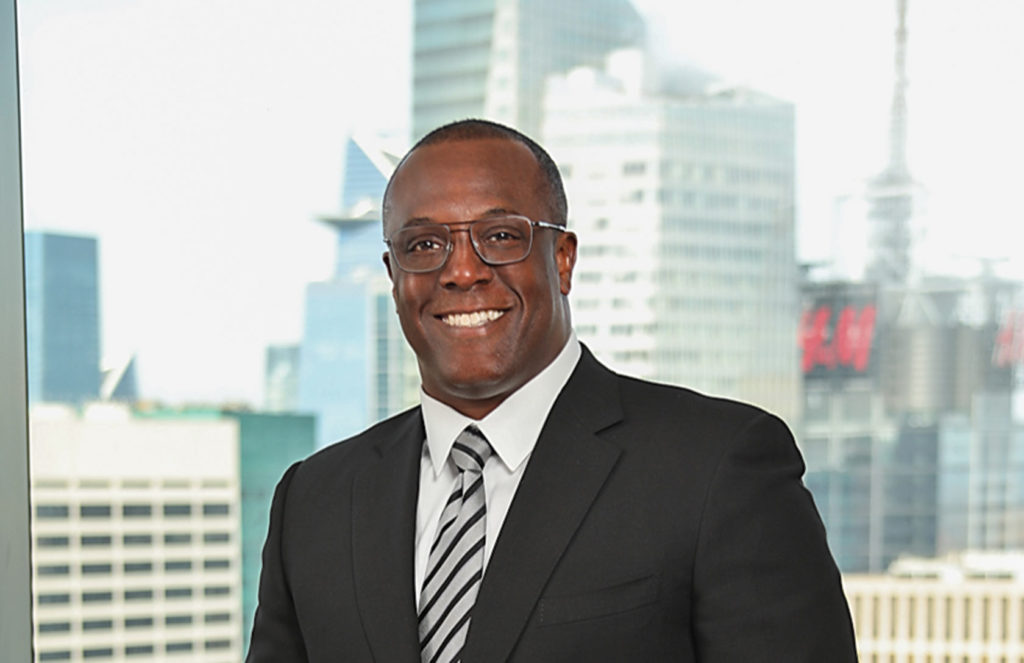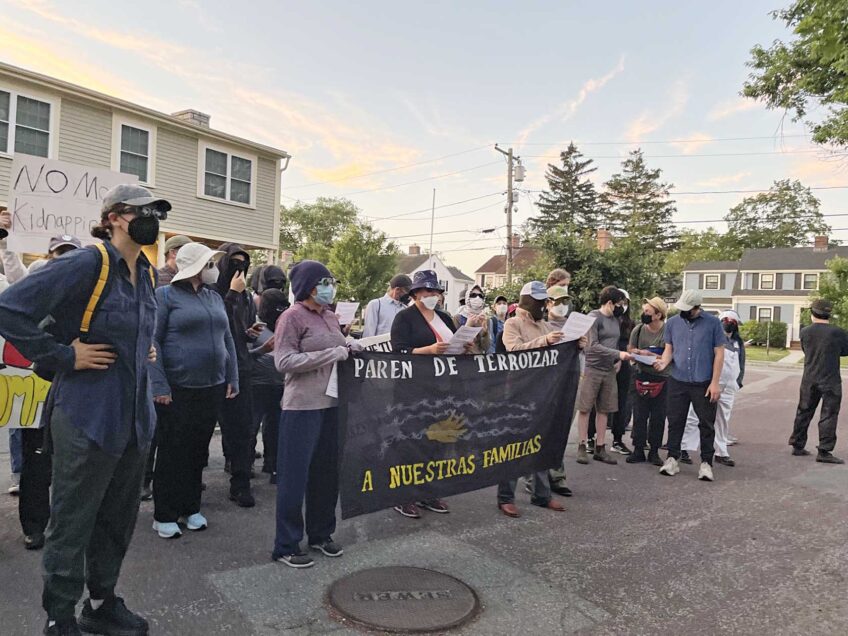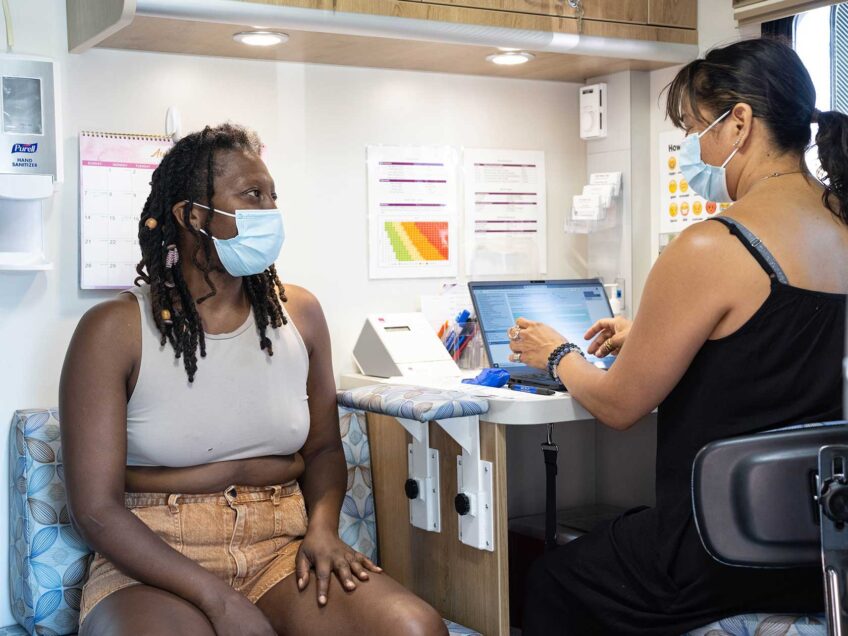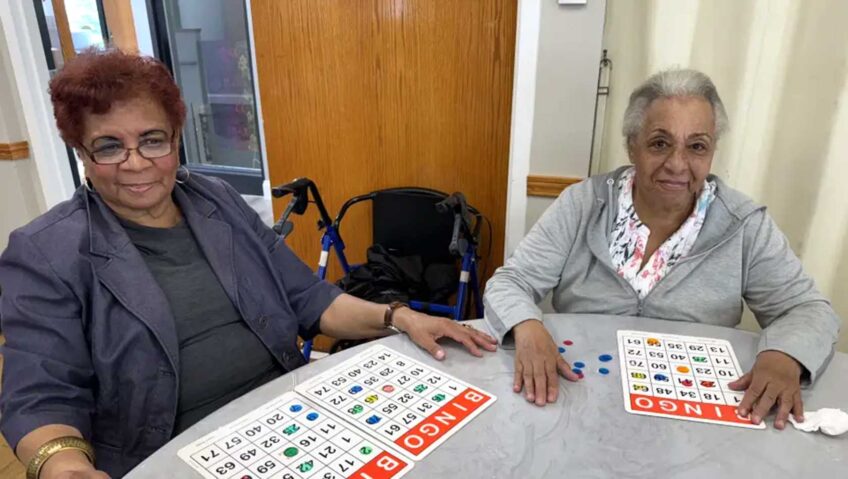
David Miree was less than 100 days into his job as head of Global Diversity, Equity and Inclusion at JPMorgan Chase two weeks ago when he rolled through the bank’s Mattapan Square branch, one of their special branches focused on making financial services more accessible in underserved areas.
For Miree, the visit was a bit like a homecoming. His first job after graduating college in 1991 was at a bank branch in his hometown, Cincinnati, where he quickly progressed to branch manager. Working on loans for local small businesses, he says he was given a unique vantage point on the importance access to capital played in the predominantly Black community in which he was raised.
“I had a firsthand view of my mid 20s of how this whole thing worked, and how it impacted communities,” he said. “It’s very clear for me as to the necessity of African small businesses, and the role they play in African American communities.”
Now Miree, who worked in Boston from 2011 to 2014 as an executive vice president at Sovereign Bank, is the co-executive sponsor of JPMorgan Chase’s $30 billion commitment to provide home and business loans in Black and Latino communities across the country, the insight he gained in his 20s informs his understanding of the importance of the loans JPMorgan Chase will be making in branches from Mattapan to South Central Los Angeles.
“It’s not just taking one process or one area of a bank and saying, ‘How we can do more,” but it’s a very holistic approach to how you can uplift communities in a very deliberate and innovative way,” he said of the bank’s commitment.
The bank does have concrete goals: 40,000 home loans for Black and Latino households, 20,000 refinance loans aimed at helping Black and Latino families obtain better interest rates and lower payments, 15,000 small business loans to firms in majority Black and Latino communities, $100 million in equity investments in Black and Latino-owned minority depository institutions (lending institutions focused on communities of color that have at least 51% people of color as board members) and community development financial institutions.
JPMorgan Chase has also committed to financing the construction or redevelopment of 100,000 affordable housing units.
The bank’s investment in Black and Latino communities, announced in 2020, came during a period of racial reckoning in the United States, spurred by the murder of George Floyd and a growing awareness among whites of the structural inequalities facing people of color. Miree said JPMorgan Chase and other banks have had longstanding commitments to communities of color, but that the police shooting of Floyd added urgency to their efforts.
“There was a recognition that we need to dig in and do even more than what we were already doing to uplift the Black and brown communities who have been underserved and have not had access to the same degree as their majority counterparts,” he said. “And so we took deliberate steps to do more.”
When Miree entered the banking field in the early 1990s, banks were facing a similar dynamic. After years of underinvestment and redlining in predominantly Black and Latino communities, officials at the Federal Reserve and members of Congress turned their attention to the Community Reinvestment Act of 1977, which required federal regulators to make sure banks were meeting the needs of low- and moderate-income communities in which they do business. Because many U.S. banks were undergoing mergers, regulators were able to mandate increased lending, the opening of branches and other bank activity in communities which for decades had not been served by banks.
The current push for expanded access to credit and banking services has a different quality than that of the 1990s, with banks such as JP Morgan Chase undergoing efforts unprompted by federal regulators. As one of the nation’s largest banks, Miree says JPMorgan Chase has a special obligation to do more.
“We recognize we have a platform, the ability to do more, and we have the desire to do that and to accomplish it and to see it through,” he said.
In addition to its financial commitment, the bank has created seven teams of executives, each aimed at increasing investment among distinct communities — among them Blacks, Latinos, Asians and Pacific Islanders, women, military veterans, people with disabilities.
“Is it unique? is it remarkable?” he said. “The answer’s yes. But we also recognize that we should be doing these things to be the bank of choice, the bank for all, as we say we are. We have to undertake actions and initiatives and strategies that showcase how we are supporting communities in a very differentiated way.”
While the growing awareness of racial disparities spurred by the George Floyd murder has sparked changes in the way banks do business, growing diversity within banks has also helped pave the way for the kinds of initiatives JPMorgan Chase is now undertaking.
“There’s an accountability framework that’s leveraged here at JPMorgan to ensure we have representation at the senior-most levels, at the managing director level of the bank,” Miree said. “That’s something that was not in place when I got my start in banking with other companies. To see the progress being made by the industry in general to increase representation has been pleasing and comforting, without question.”
Miree talks about the changes in the industry his own upward trajectory in banking with the knowledge that such things were unthinkable a generation ago. Miree’s grandfather, who passed away seven years ago at age 105, grew up in rural Alabama, moving to West Virginia to work in coal mines. His father worked in the postal service in Cincinnati.
Miree would like to see the same upward mobility his family has experienced across generations replicated in Black and Latino communities throughout the nation. With the investment his firm is making, he says business growth and increased homeownership will help many customers make such gains.
“When their businesses thrive, their personal households thrive, they’re able to make progress for the neighborhoods, communities and schools,” he said.







